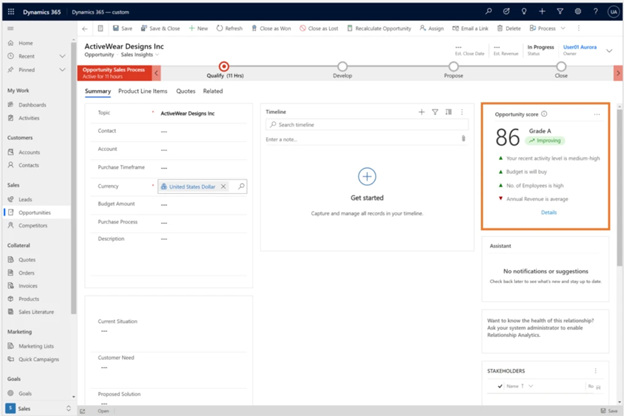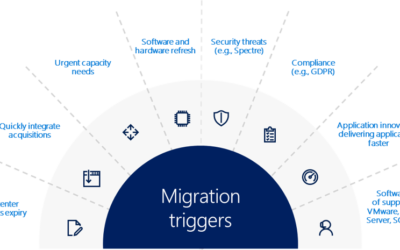Microsoft has developed new capabilities in Dynamics 365 to discover email messages, meetings, and
phone call activities related to an opportunity, and then to factor these signals into the score.
Capturing activities to determine opportunity health
A healthy opportunity will usually have activities happening in it like email messages, meetings, and phone
calls.
Many of our predictive opportunity scoring customers were gathering these signals manually to determine
opportunity health.
Microsoft has replaced the need for customers to manually track activities by using AI to gather activities,
approving prediction accuracy, and compensating for cases where sellers do not diligently update the
opportunity fields.
This can help the seller make more educated choices about what the best next action might be.
For example, a high level of activity may indicate that the opportunity is heating up and is worth attention.
Likewise, an opportunity with where the activity level is low may need immediate attention.
Here’s an example showing the opportunity score improving
Here's an example showing the opportunity score declining:
Connecting opportunities with activities
In addition to activities that are explicitly connected to opportunities, an algorithm is developed to infer
indirect connections between activities and opportunities, using Contact and Account activity timelines.
Since these are not trivial connections (for example, an account may have multiple opportunities), AI is
assigning them appropriate predictive weights.
How the predictive opportunity scoring model is trained
First, we make sure, automatically, that the data we have is meaningful and contributing to the prediction.
Then we look at each recent activity level of every opportunity and try to find a correlation between this
signal and the likelihood of winning the opportunity.
After the model is trained, we can view the open opportunities in the system and give them a score based
on past examples.
What the AI does is learn how recent activity level affects the likelihood to win an opportunity in your
organization.












